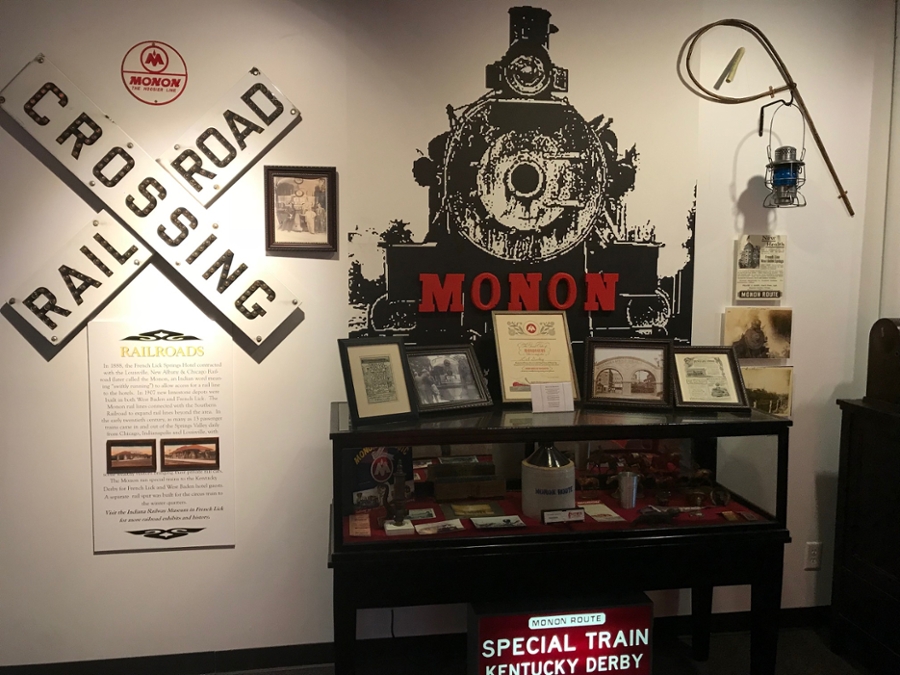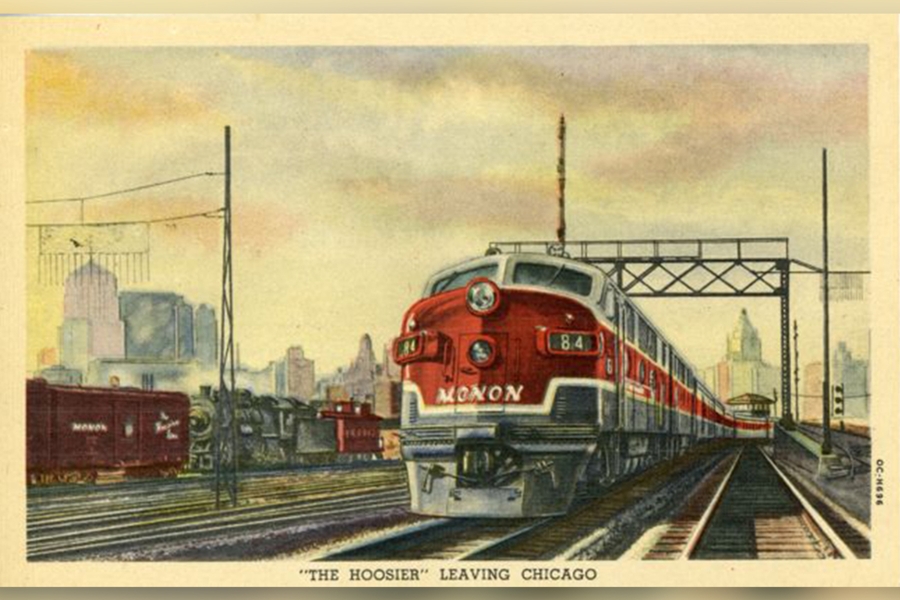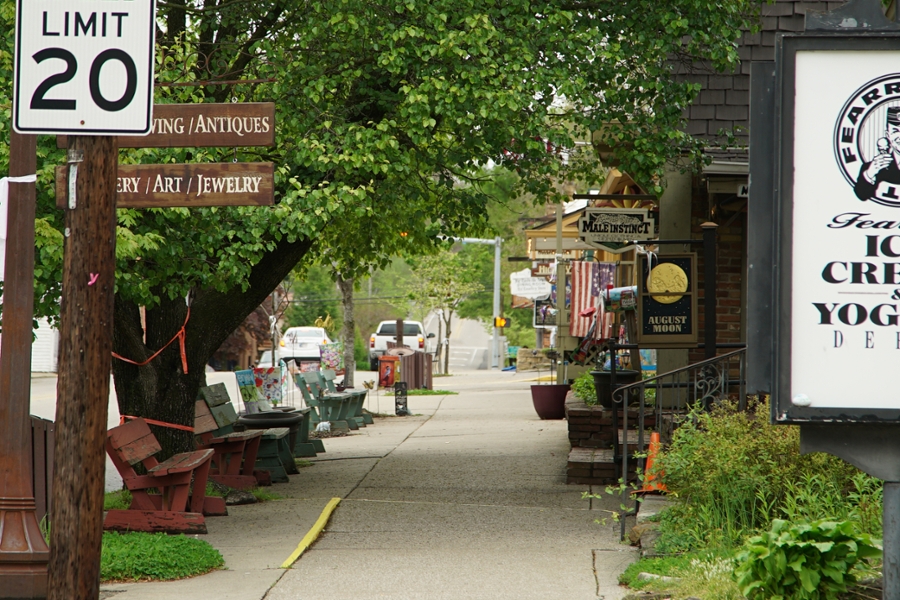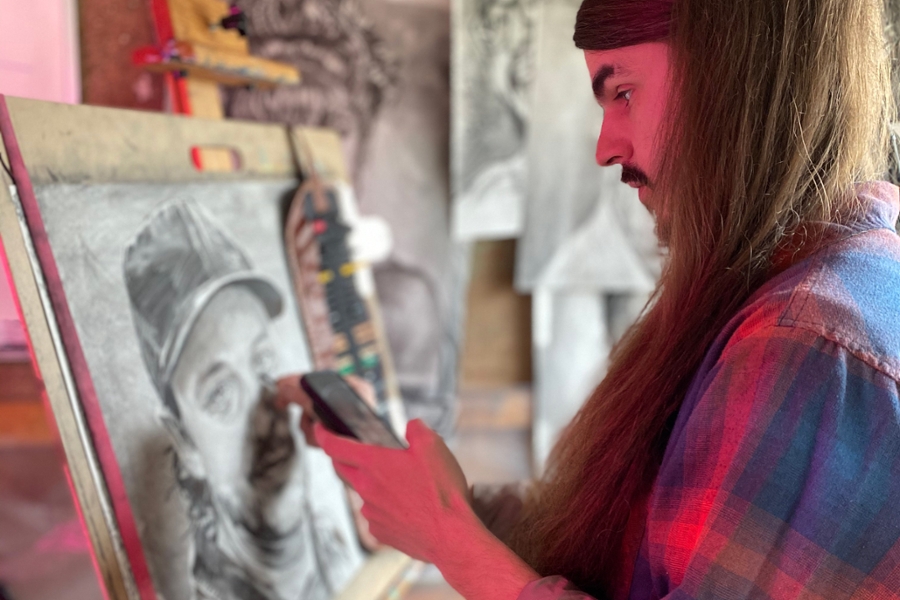Like the train that inspired it, a new art installation has arrived in French Lick with a collection centered around The Hoosier Line, better known as the Monon Railroad.
The “Art of the Monon” exhibit features 11 paintings by renowned railroad artist Howard Fogg, commissioned back in 1947 for the line’s centennial. There are even Monon artifacts like metal chips from the trains themselves, sent to Fogg so his colors would be as accurate as possible.
“[Fogg] does a great job of capturing the majesty of these engines as they make their way through Indiana’s natural landscapes,” said French Lick Resort Marketing Manager Steve Rondinaro. “You get a sense of motion and of power.”
For over a century, the Monon hauled people and freight across the state. The Monon was unique even when it opened in 1853; while other railroads were westward bound to open up the new frontier, the Monon cut north to south from Chicago to Louisville.
The Monon connected cities across Indiana, from Orleans and Bloomington to Lafayette and Michigan City. Much of that service went among the state’s universities, which even influenced the aesthetics of the trains. Passenger engines were painted in Indiana University cream and crimson, and freight engines bore Purdue’s black and gold.
Considering the French Lick Springs and West Baden Springs Hotels’ relationship with the railroad, it’s fitting that the paintings are being shown off in French Lick.
“The Monon was absolutely pivotal to the growth of this area,” Rondinaro said. “They dropped people off at the front doors of both hotels.”
Though rail travel seems a world away now, the Monon operated as recently as the 1970s.
“Throughout the 1960s and early 1970s it remained a top-rate company, albeit always a David surrounded by Goliaths,” writes American-Rails.com. It began fade soon after, until Louisville & Nashville bought the railroad in the mid-70s.

But the Monon left its mark on plenty of Hoosiers, including collector and self-described “Bloomington-bound Monon enthusiast” Vince Savage. Savage’s ties to the railroad go back as far as – well, the day he was born.
The Monon celebrated its centennial in the last few days of July 1947. “I don’t know how much you believe in synchronicity or any of that,” Savage said, “I was being born [the same time] at the Bloomington Hospital in Room 103 over about two blocks from the Monon depot.”
At age five, his father gave him a tube with 10 lithograph prints of the Fogg watercolors – all of which, plus one he found at a memorabilia show, would later go to the “Art of the Monon” exhibit.
Savage said Fogg painted around 20 works in total for the Monon, which he says was a celebration of what the railroads were calling “dieselization.”
“Up until World War II, most railroads were run by steam,” Savage said. “But Monon was among the first…to modernize, and that meant diesel engines.”
The question of where the original paintings ended up or even how many lithographs were printed still remains, but Savage was able to come close in the 1970s when he met Fogg and his wife at their home in Colorado.
“He not only was interested in seeing them again, but he agreed to sign them all,” Savage said. Fogg even noted which locations the paintings depicted.

Savage says he gets a kick out of younger people seeing the paintings and having a hard time imagining how regular an occurrence rail travel was. But for the people who grew up with it, he says, “The whole thing is kind of a social, Hoosier nostalgia experience.”
Apart from that nostalgia, Rondinaro says the time-capsule feel of the exhibition also gives some insight into how vital the Monon was to the construction of so many Indiana cities.
“You drive through Orleans and you think, ‘What the heck? Why is there this giant grain-handling facility in the middle of town?’ Well, it sits right next to the railroad track that ran right beside the town square,” he said. “The Monon did that in a bunch of Indiana towns.
“The railroad helped make us.”
The “Art of the Monon” exhibit is on display at the French Lick West Baden Museum until September 1 and is covered by regular museum admission. For more information, you can head to their website.




